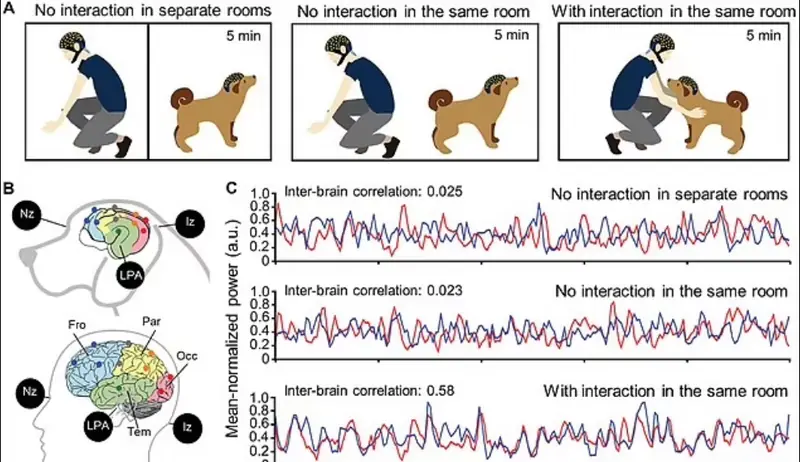Researchers from the Chinese Academy of Sciences have discovered that neurons in brain regions associated with attention synchronize as dogs and humans grow closer. Previous studies have suggested that the human brain synchronizes during interactions with other people. However, this is the first scientific work to reveal brain synchronization across different species.

What did the scientists learn? The team employed an innovative method in their research—dual electroencephalography. This technique allowed them to measure brain activity in randomly paired “human-dog” duos. The researchers found that the brain activity of participants in each pair became significantly more synchronized when they interacted with each other compared to when they were simply in the same room. Moreover, the level of synchronization increased notably over five days of testing as the pairs became more familiar with one another. In their report, led by Yun Qiu Zhang, the team stated, “We have demonstrated for the first time that directed interbrain neural interactions occur between humans and dogs, particularly in the frontal and parietal regions associated with shared attention.”

In a second experiment, participants were asked to either pet a dog without making eye contact or to simply look into the dog’s eyes without touching it. Both forms of interaction enhanced brain synchronization. Notably, maintaining a focused gaze was linked to increased activity in the frontal lobe, while petting activated the parietal region. Importantly, the synchronization created by both touch and gaze simultaneously was the highest, as reported by the Daily Mail.
The researchers also found that during interactions with humans, dogs with the most common autism spectrum disorder—caused by a mutation in the SHANK3 gene—showed a significant decrease in brain synchronization. The results of the study were published in the journal Advanced Science.
